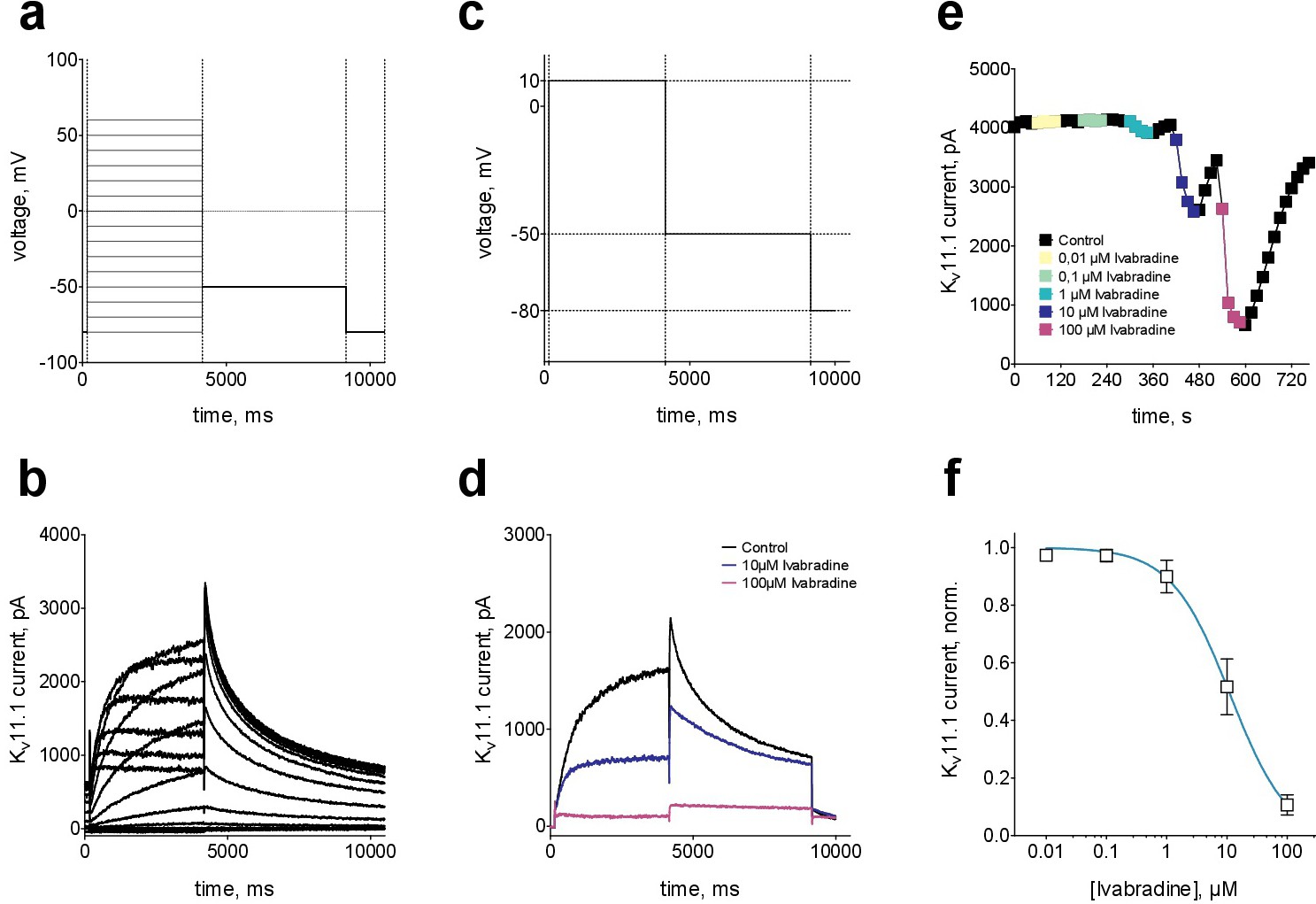Fig. 1. Effect of ivabradine on heterologously expressed human Kv11.1 channels. (a) Voltage-clamp protocol to derive current voltage relationships. (b) Typical outward potassium currents as elicited by the voltage-clamp protocol shown in (a) for recombinant Kv11.1 channels expressed in tsA-201 cells. (c) Two-step voltage-clamp protocol (+10 mV, -50 mV) applied every 15s to first activate and then deactivate Kv11.1 channels. (d) Typical outward potassium currents for the voltage-clamp protocol shown in (c) under control conditions and in the presence of 10 and 100 ÁM of ivabradine. The peak of tail currents at -50 mV was monitored to test for the effect of different ivabradine concentrations. (e) Kv11.1 tail current amplitude as elicited by the voltage-clamp protocol in (c, d) under control conditions and in the presence of ascending concentrations of ivabradine. (f) Summary of normalized steady-state Kv11.1 current amplitudes (mean +- SEM, n = 7) for all ivabradine concentrations tested. A Non-linear fit with a Hill equation (petrol) resulted in an IC50 value of 11+-2 ÁM.
